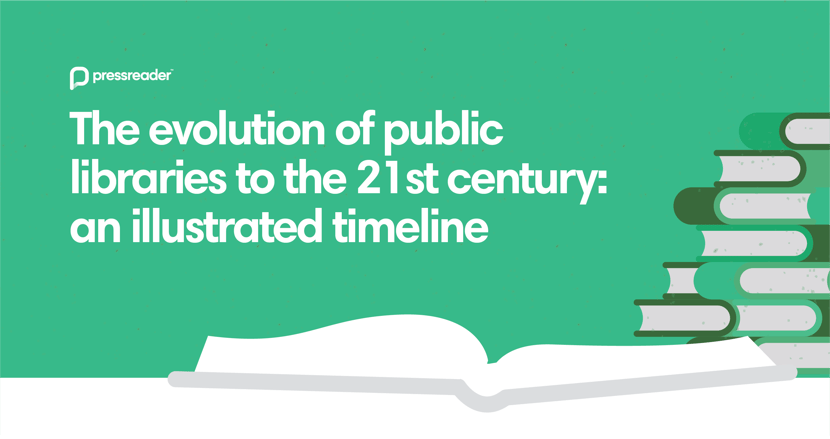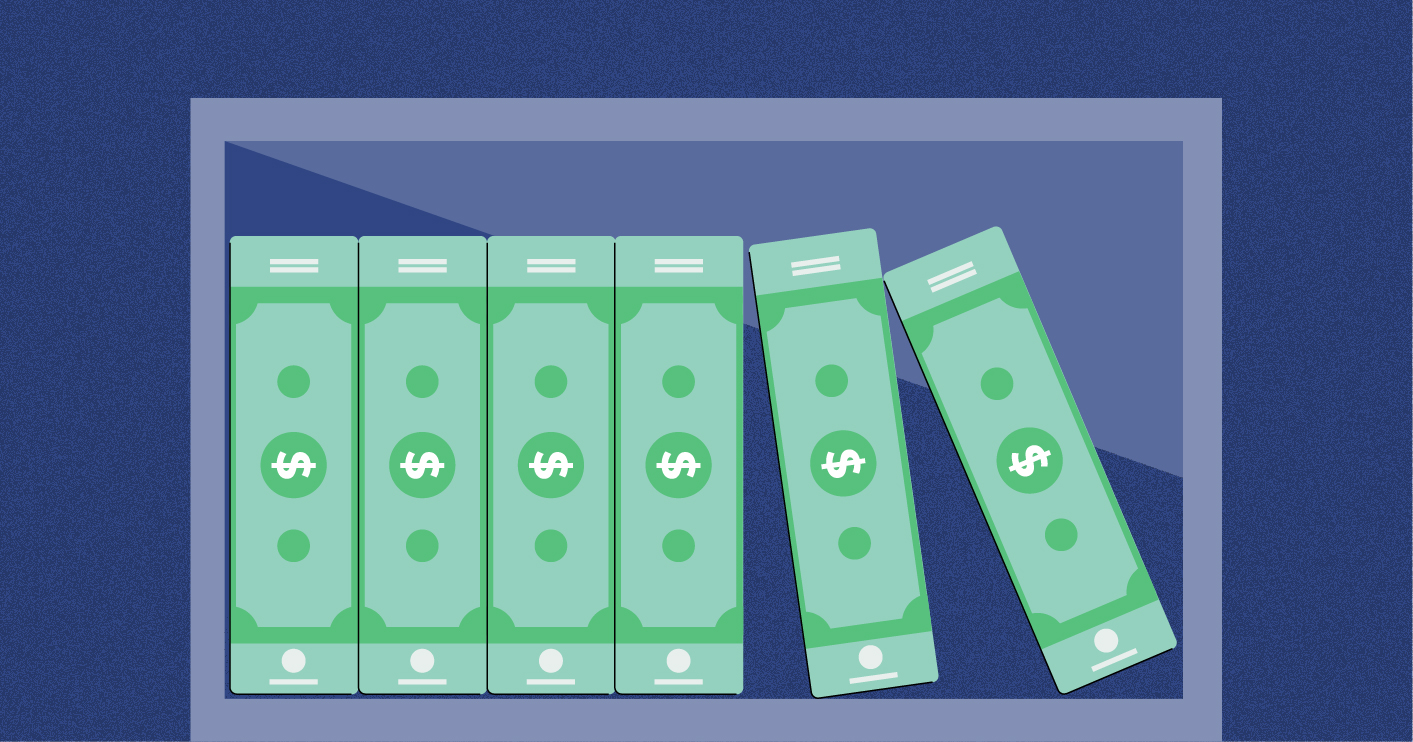A time traveler from 1895 (the year H.G. Wells published his sci-fi classic The Time Machine) would likely have a tough time wrapping her head around what she was seeing if she were to visit a present-day library.
From its beginnings as a book repository, the library's role in society has evolved to become a vital community hub and center for self-improvement and lifelong learning.
As libraries enter the latest phase of their history — amid challenges to intellectual freedom and the new possibilities presented by emerging technologies like artificial intelligence (AI) — let's look back at the evolution of public libraries to remember just how far they've come, and how many more exciting new opportunities for change are on the horizon.
See also:
-
Four library technology trends shaping the future of public libraries
-
The future of libraries is upon us. Here’s how yours can keep pace
600 BCE: The first library
Back in the seventh century, Assyrian ruler Ashurbanipal stowed 30,000 cuneiform tablets by topic — everything from scholarly texts to blockbusters like Epic of Gilgamesh. But ancient civilizations all over the world built their own repositories of knowledge. Egypt’s Library of Alexandria featured over 700,000 documents, while the 10th-century library in Cordova, Spain contained more than 400,000 books of its own.
Mid-1800s: Public libraries gain popularity
Privately funded, members-only libraries continued to thrive through most of human history (even Benjamin Franklin got in on the game with his own subscription library). But in the mid-1800s, interest started brewing in sharing these fountains of knowledge more widely, and new libraries began opening around the world.
In 1833, the first tax-supported library in the United States opened in Peterborough, New Hampshire. With the support of fundraising women’s groups post-Civil War (and generous endowments from Andrew Carnegie) thousands more follow.
1876: Library organization changes forever
It’s a banner year for libraries: not only is the American Library Association formed, and the American Library Journal founded, but the Dewey decimal system is introduced, bringing order to increasingly unwieldy book stacks.
1890s: Children set foot in the library
For a long time, public libraries were seen as places for intellectual adults (typically men) to gather. That’s right: no kids allowed. But things loosen up as the value of childhood reading and education increase.
At the Brookline Public Library, the first children’s reading room opens up where the little ones are supervised by the library’s janitor.
1932: Checkouts go electric
For years, a two-card system was the best librarians could do to keep track of what book was where: each book had a card where checkouts were jotted down, and borrowers had their own personal cards with a list of their selections.
But the Gaylord brothers revolutionized everything with their electrically operated book-charging machine. With their innovative system, an embossed borrower card was used to register the borrower’s ID number on a book card, which was then filed by call number.
1940s: High-tech distribution wows
Pneumatic tubes and dumbwaiters were all the rage in new library buildings. Library users were dazzled by the rapid-fire delivery of their requested books from the stacks — modern convenience, with just the press of a button.
1970s: Computerized cataloguing becomes the norm
As early as the 1970s, machine-readable cataloguing became the standard. A system called MARC (developed by data-processing pioneer Henriette Avram for the Library of Congress) was the national and international method of creating and sharing records among libraries — and it remained so for almost 50 years.
1980s: Libraries dabble in digitizing content
The Library of Congress (ever the innovator!) began several pilot projects to digitize items from both its print and non-print collections. (Its website would debut in 1993, and today, almost 40 million primary-source files are available online from anywhere in the world.)
1991: The first digital library
Carnegie Mellon University introduced the Mercury Electronic Library back in 1991. At the time, it featured a dozen text-based databases, and a collection of page images from computer science journal articles.
It may have been limited, but the storage and distribution of these files over the campus network was revolutionary and would set the stage for an explosion of digital content to come.
Late 1990s: Library architecture evolves
As public libraries became a hub for more than just quiet reading, architects and designers began to rethink what the functional space of a physical library might look like. Modern public library design started to change from stuffy spaces for book storage or quiet study into light-and-airy, open-concept gathering spots for the community.
2000: RFID technology simplifies check-outs
With the introduction of RFID self-checkout kiosks at public libraries, patrons became empowered to handle this low-skill task themselves, freeing up staff to provide more important library services to their communities.
Early 2000s: Libraries adopt digital newsstands
Digital newsstands like PressReader begin to offer libraries a world’s worth of virtual content. Through these sorts of tools, libraries can now provide an even broader perspective of opinions and local reporting to patrons, wherever they may be physically located around the globe.
Late 2000s: Library catalogues go beyond books
From movies to music, libraries have long offered much more than physical books. Some even allow library patrons to check out hiking gear, board games or museum passes!
But as technological tools become more and more prevalent in our world — if not downright necessary — they’ve also become an important inventory item for the 21st century library. Providing computers on site, or allowing for the checkout of laptops and smartphones, public libraries help bridge the digital divide.
2010s-now: Building welcoming creator spaces
Today’s libraries aren’t just places to consume content: they’re a place to create. With more and more libraries offering maker studios, podcasting booths, video editing software, workshops and tutorials, the library has become a vibrant creative hub where just as much content is produced as it is enjoyed.
In recent years, artificial intelligence has emerged as a major driver of the evolution of public libraries on a number of fronts. For example:
-
AI-powered search engines and recommendation systems can help library staff and patrons find relevant resources more efficiently.
-
AI and machine-learning algorithms can assist in the curation and management of library collections through data-driven decision-making.
-
AI chatbots can handle routine inquiries and provide basic assistance to patrons, freeing up librarians to focus on more complex tasks while also providing service to users outside of regular operating hours.
The evolution of public libraries will continue, of course, but wherever the future takes us, it’s key to note that the 21st century librarian has never been just a guardian of books. They’re researchers, data analysts, information analysts, database managers, social media managers…and the evolution of technology over the past decades has only made their multi-faceted role and immeasurable value clearer.










